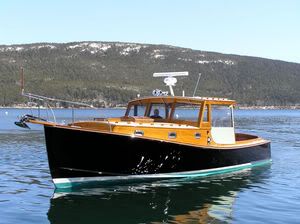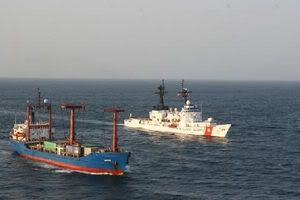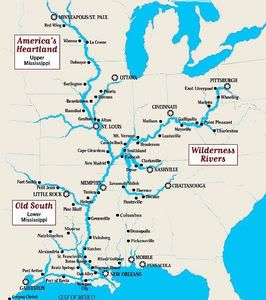John Williams Boat Company to Launch “Survivor,” A Stanley 36

Excitement is building at the John Williams Boat Company in Hall Quary, Maine. On Wednesday, May 2nd, at 11:30 AM, John “Jock” Williams and his “crew” will be launching Survivor, a Stanley 36 lobster boat. The Stanley 36 is the Flagship of the company created in the 1970’s, when Founder and CEO Jock Williams decided to leave the comforts of his job at Hinckley and start out on his own.
The day following the launching ceremony at the Hall Quary boatyard, the vessel and crew will head south to the boat’s new home on Long Island Sound. SURVIVOR is a true downeast lobster boat with a traditional pilothouse, open sides and back. A pretty boat with classic proportions, the Stanly 36 features teak cabin sides and pilothouse, complementing the black hull.
Boasting modern outfitting, such as the Mastervolt Mastervision Modular Electrical System, including a generator and air conditioning, the boat nonetheless sports traditional hardware and interior finishing. With a nod to Herreshoff styling, the interior is white with mahogany trim. The forward cabin sole is of teak and holly. Stainless steel and corian countertops provide a luxurious fell.
Survivor has a beautiful custom butterfly hatch, custom hardware and meticulously designed furniture, including a pilothouse table, settee, helm chair and stern seat. The handsomely finished cabin offers a full 6’3” of head room.
The galley is to port and the enclosed head, with shower, is to starboard. Next forward are port and starboard settees, and outboard drawers and hanging locker. In the bow there is a large comfortable V-berth with generous storage below. Additional sleeping accommodations are available either through fold-down pilot berths forward or with a pullout double in the pilothouse.
The diesel engine is YANMAR 440 with an Evolution Drive propulsion system capable of a cruising speed of 18 knots, topping at 22 knots. She carries 300 gallons of fuel in two tanks. There is also tankage for 100 gallons of water. The pilothouse, which has an impressive 6’7” of headroom, is fitted with a conveniently placed steering station, seat, and storage compartment. The three-panel windshield plus two-side windows provide excellent visibility, and the stamoid side and stern curtains provide an enclosure that can be easily lowered during periods of inclement weather.
Survivor was commissioned by an owner who tasked his brother with carefully researching boats from as many as twelve builders. From that list three were chosen for more intensive inspection. After visiting each yard, they chose Williams. “We were able to show them JAVA, a 1997 Stanley 36,” explained John Williams. “She matched their cruising and boating requirements and they just loved the lines of the boat.”
According to Williams, the Stanley 36 offers the best of both worlds: a rugged hull that gives a stable, sea kindly ride even in choppy conditions, and beautifully crafted accommodations that provide civilized cruising comforts.
For more information about the line of Stanley’s, contact John Williams Boat Company (207-244-7854, email Info@jwboatco.com or visit them on the web at www.jwboatco.com).

